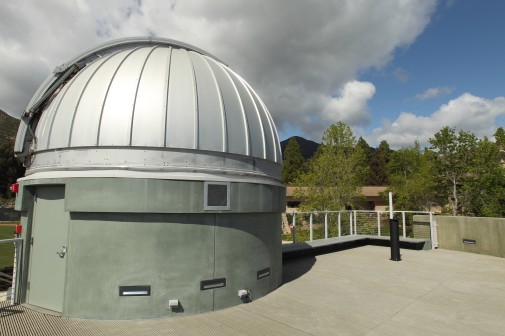Cloudy Skies Threaten Views of Red Planet
By
Westmont

Weather permitting, Westmont’s powerful Keck Telescope will be available to Central Coast stargazers Friday, March 16, beginning at about 8 p.m. and lasting several hours. The observatory opens its doors to the public every third Friday of the month in conjunction with the Santa Barbara Astronomical Unit, whose members bring their own telescopes to Westmont for the public to gaze through. In case of inclement weather, please call the Telescope Viewing Hotline at (805) 565-6272 and check the Westmont website to see if the viewing has been cancelled.
Westmont students and faculty use the 24-inch reflector telescope to conduct astronomical research. The Keck Telescope is housed in the observatory between Russell Carr Field and the track and field/soccer complex. Free parking is available near the baseball field.
Westmont physics instructor Thomas Whittemore says we don’t need a telescope to see a spectacular near-conjunction of Venus and Jupiter in the west. “These two planets have been closing in on one another for the last month or so,” he says. “On March 13 they were about 3 degrees apart. Now Venus, the brighter of the two, is moving up and away from Jupiter. They set a little after 10:30 this evening, but are still wonderful objects to see glowing above the northwestern horizon around 10.”
Whittemore, who earned a master’s degree and doctorate in physics from the University of Arizona, says the Great Orion Nebula, M42 and several open clusters, M35 in Gemini (the Twins), M37, M38 and M36, in Auriga (the Charioteer), will also be available for viewing.
“Mars, having recently gone through opposition, opposite the Earth with respect to the sun, will still be low in the sky, but I am hoping to get a peek at Mars toward the end of the public viewing this evening,” he says. “Only under the best viewing conditions will we be able to see any detail on the Red Planet. If we have the benefit of clear skies, the Northern Pole of Mars should be in view.”
Filed under
Campus Events, Campus News, Faculty and Staff, Press Releases